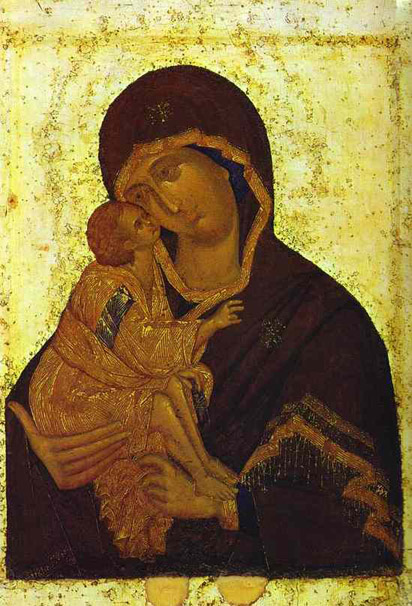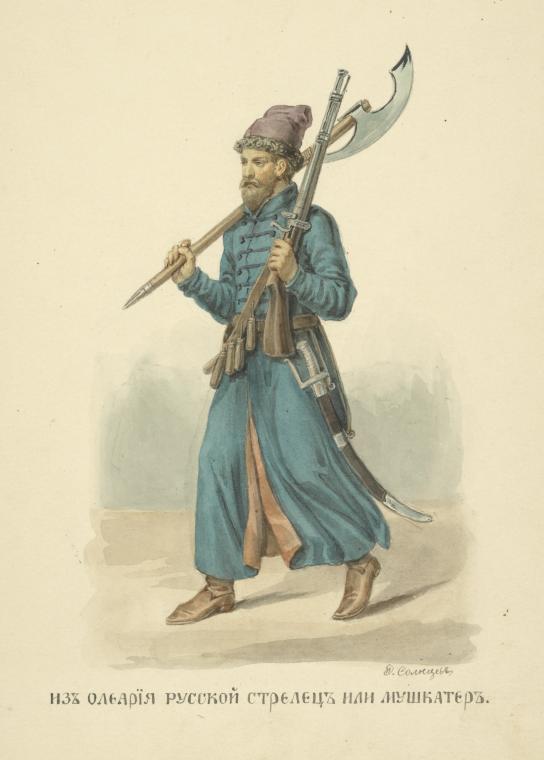|
Donskoy Monastery
Donskoy Monastery (russian: Донско́й монасты́рь) is a major monastery in Moscow, founded in 1591 in commemoration of Moscow's deliverance from the threat of an invasion by the Crimean Khan (title), Khan Ğazı II Giray, Kazy-Girey. Commanding a highway to the Crimea, the monastery was intended to defend southern approaches to the Moscow Kremlin. History Muscovite period The monastery was built on the spot where Boris Godunov's mobile fortress and Sergii Radonezhsky's field church (building), church with Theophanes the Greek, Theophan the Greek's icon ''Our Lady of the Don'' had been located. Legend has it that Dmitry Donskoy had taken this icon with him to the Battle of Kulikovo in 1380. The Tatars left without a fight and were defeated during their retreat. Initially, the cloister was rather poor and numbered only a few monks. As of 1629, the Donskoy Monastery possessed 20 :wikt:wasteland, wastelands and 16 peasant households (20 peasants al ... [...More Info...] [...Related Items...] OR: [Wikipedia] [Google] [Baidu] |
Donskoy Monastery1
Donskoy (masculine), Donskaya (feminine), or Donskoye (neuter) may refer to: *Donskoy (surname) *Donskoy District, a district of Southern Administrative Okrug, Moscow, Russia *Donskoy (inhabited locality) (''Donskaya'', ''Donskoye''), several inhabited localities in Russia *Donskoy Monastery, a major male monastery in Moscow, Russia **Donskoye Cemetery *Donskoye (air base), an air base in Kaliningrad Oblast, Russia *Donskoy cat, a breed of mostly hairless cat See also *Dmitry Donskoy (other) {{Disambiguation, geo ... [...More Info...] [...Related Items...] OR: [Wikipedia] [Google] [Baidu] |
Dmitry Donskoy
Saint Dmitry Ivanovich Donskoy ( rus, Дми́трий Ива́нович Донско́й, Dmítriy Ivanovich Donskóy, also known as Dimitrii or Demetrius), or Dmitry of the Don, sometimes referred to simply as Dmitry (12 October 1350 – 19 May 1389), son of Ivan II the Fair of Moscow (1326–1359), reigned as the Prince of Moscow from 1359 and Grand Prince of Vladimir from 1363 to his death. He was the first prince of Moscow to openly challenge Mongol authority in Russia. He is regarded as a national hero and central figure of the Russian Middle Ages. His nickname, Donskoy ("of the Don"), alludes to his great victory against the Tatars in the Battle of Kulikovo (1380), which took place on the Don River. He is venerated as a Saint in the Orthodox Church with his feast day on 19 May. Early reign Dmitry was born in Moscow in 1350, the son of Ivan the Fair, Grand Prince of Moscow, and his second wife, Alexandra Vassilievna Velyaminova, the daughter of the mayor of Moscow. ... [...More Info...] [...Related Items...] OR: [Wikipedia] [Google] [Baidu] |
Andreyevsky Monastery , a historical bridge in Moscow, Russia demolished in 1998
{{Disambiguation ...
Andreyevsky (masculine), Andreyevskaya (feminine), or Andreyevskoye (neuter) may refer to: *Andreyevsky (surname), Slavic last name * Andreyevsky (rural locality) (''Andreyevskaya'', ''Andreyevskoye''), several rural localities in Russia *Andreyevsky Bridge Andreyevsky Bridge (russian: italic=yes, Андреевский мост, St. Andrew’s Bridge) name refers to a historical bridge demolished in 1998 and three existing bridges across Moskva River, located between Luzhniki and Gorky Park in Mo ... [...More Info...] [...Related Items...] OR: [Wikipedia] [Google] [Baidu] |
Petro Konashevych
Petro Konashevych-Sahaidachny ( uk, Петро Конашевич-Сагайдачний; pl, Piotr Konaszewicz-Sahajdaczny; born about 1582 in Kulchytsi, today Sambir Raion – 20 April 1622 in Kyiv) was a Ukrainian Cossack political and civic leader, Hetman of Zaporozhian Cossacks from 1616 to 1622, a military leader of Polish–Lithuanian Commonwealth both on land and sea. While being a hetman, he transformed the Cossack Host from an irregular military formation into a regular army. Under his leadership, the Cossacks, the Orthodox clergy and peasants of Ukraine began to emerge as a united nation. His troops played a significant role in the Battle of Khotyn against the Turks in 1621 and Polish Prince Władysław's attempt to gain the throne of Russia in 1618. In 2011 he was canonized in the Orthodox Church of Ukraine as a Right-Believing hetman. On 20 April 2022 he was further declared by Metropolitan Epifaniy patron saint of the military forces of Ukraine. Early li ... [...More Info...] [...Related Items...] OR: [Wikipedia] [Google] [Baidu] |
Cossacks
The Cossacks , es, cosaco , et, Kasakad, cazacii , fi, Kasakat, cazacii , french: cosaques , hu, kozákok, cazacii , it, cosacchi , orv, коза́ки, pl, Kozacy , pt, cossacos , ro, cazaci , russian: казаки́ or , sk, kozáci , uk, козаки́ are a predominantly East Slavic Orthodox Christian people originating in the Pontic–Caspian steppe of Ukraine and southern Russia. Historically, they were a semi-nomadic and semi-militarized people, who, while under the nominal suzerainty of various Eastern European states at the time, were allowed a great degree of self-governance in exchange for military service. Although numerous linguistic and religious groups came together to form the Cossacks, most of them coalesced and became East Slavic-speaking Orthodox Christians. The Cossacks were particularly noted for holding democratic traditions. The rulers of the Polish-Lithuanian Commonwealth and Russian Empire endowed Cossacks with certain sp ... [...More Info...] [...Related Items...] OR: [Wikipedia] [Google] [Baidu] |
Ukraine
Ukraine ( uk, Україна, Ukraïna, ) is a country in Eastern Europe. It is the second-largest European country after Russia, which it borders to the east and northeast. Ukraine covers approximately . Prior to the ongoing Russian invasion, it was the eighth-most populous country in Europe, with a population of around 41 million people. It is also bordered by Belarus to the north; by Poland, Slovakia, and Hungary to the west; and by Romania and Moldova to the southwest; with a coastline along the Black Sea and the Sea of Azov to the south and southeast. Kyiv is the nation's capital and largest city. Ukraine's state language is Ukrainian; Russian is also widely spoken, especially in the east and south. During the Middle Ages, Ukraine was the site of early Slavic expansion and the area later became a key centre of East Slavic culture under the state of Kievan Rus', which emerged in the 9th century. The state eventually disintegrated into rival regional po ... [...More Info...] [...Related Items...] OR: [Wikipedia] [Google] [Baidu] |
Streltsy
, image = 01 106 Book illustrations of Historical description of the clothes and weapons of Russian troops.jpg , image_size = , alt = , caption = , dates = 1550–1720 , disbanded = , country = Tsardom of Russia , allegiance = Streltsy Department , branch = , type = Infantry , role = , size = , command_structure = Russian Army , garrison = Moscow , garrison_label = , nickname = , patron = Saint George , motto = , colors = , colors_label = , march = , mascot = , anniversaries = , equipment = , equipment_label = , battles = Siege of KazanLivonian WarBattle of MolodiPolish–Muscovite War (1605–1618)Smolensk WarRusso-Polish War (1654–1667)Great Northern War , battles_label = , decorations = , battle_honours = , battle_honours_label = , flying_hours = , website = , current_commander = , commander1 = , commander1_label = , commander2 = , commander2_label = , commander3 = , commander3_label = , commander4 = , commander4_label = , comman ... [...More Info...] [...Related Items...] OR: [Wikipedia] [Google] [Baidu] |
Jan Karol Chodkiewicz
Jan Karol Chodkiewicz ( lt, Jonas Karolis Chodkevičius, be, Ян Караль Хадкевіч ; 1561 – 24 September 1621) was a military commander of the Grand Ducal Lithuanian Army, who was from 1601 Field Hetman of Lithuania, and from 1605 Grand Hetman of Lithuania. He was one of the most prominent noblemen and military commanders of the Polish–Lithuanian Commonwealth of his era. His coat of arms was Chodkiewicz, as was his family name. He played a major role, often as the top commander of the military of the Polish-Lithuanian Commonwealth, in the Wallachian campaign of 1599–1601, the Polish–Swedish War of 1600–11, the Polish–Muscovite War of 1605–18, and the Polish–Ottoman War of 1620–1621. His most famous victory was the Battle of Kircholm in 1605, in which he dealt a major defeat to a Swedish army three times the size of his own. He died on the front lines during the battle of Khotyn, in the besieged Khotyn Fortress, a few days before the Otto ... [...More Info...] [...Related Items...] OR: [Wikipedia] [Google] [Baidu] |
Household
A household consists of two or more persons who live in the same dwelling. It may be of a single family or another type of person group. The household is the basic unit of analysis in many social, microeconomic and government models, and is important to economics and inheritance. Household models include families, blended families, shared housing, group homes, boarding houses, houses of multiple occupancy (UK), and single room occupancy (US). In feudal societies, the royal household and medieval households of the wealthy included servants and other retainers. Government definitions For statistical purposes in the United Kingdom, a household is defined as "one person or a group of people who have the accommodation as their only or main residence and for a group, either share at least one meal a day or share the living accommodation, that is, a living room or sitting room". The introduction of legislation to control houses of multiple occupations in the UK Housing Act (200 ... [...More Info...] [...Related Items...] OR: [Wikipedia] [Google] [Baidu] |
Peasant
A peasant is a pre-industrial agricultural laborer or a farmer with limited land-ownership, especially one living in the Middle Ages under feudalism and paying rent, tax, fees, or services to a landlord. In Europe, three classes of peasants existed: slave, serf, and free tenant. Peasants might hold title to land either in fee simple or by any of several forms of land tenure, among them socage, quit-rent, leasehold, and copyhold. In some contexts, "peasant" has a pejorative meaning, even when referring to farm laborers. As early as in 13th-century Germany, the concept of "peasant" could imply "rustic" as well as "robber", as the English term villain/villein. In 21st-century English, the word "peasant" can mean "an ignorant, rude, or unsophisticated person". The word rose to renewed popularity in the 1940s–1960s as a collective term, often referring to rural populations of developing countries in general, as the "semantic successor to 'native', incorporating all its conde ... [...More Info...] [...Related Items...] OR: [Wikipedia] [Google] [Baidu] |
Monk
A monk (, from el, μοναχός, ''monachos'', "single, solitary" via Latin ) is a person who practices religious asceticism by monastic living, either alone or with any number of other monks. A monk may be a person who decides to dedicate their life to serving other people and serving God, or to be an ascetic who voluntarily chooses to leave mainstream society and live their life in prayer and contemplation. The concept is ancient and can be seen in many religions and in philosophy. In the Greek language, the term can apply to women, but in modern English it is mainly in use for men. The word ''nun'' is typically used for female monastics. Although the term ''monachos'' is of Christian origin, in the English language ''monk'' tends to be used loosely also for both male and female ascetics from other religious or philosophical backgrounds. However, being generic, it is not interchangeable with terms that denote particular kinds of monk, such as cenobite, hermit, anchor ... [...More Info...] [...Related Items...] OR: [Wikipedia] [Google] [Baidu] |

.jpg)



_(6).jpg)


